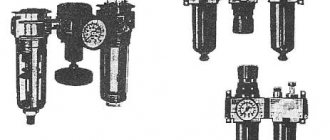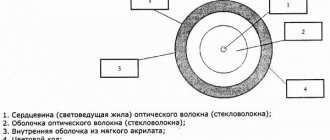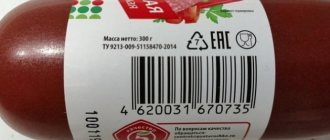HS codes
8504 - Electrical transformers, static electrical converters (for example, rectifiers), inductors and chokes:
| 8504 | Electrical transformers, static electrical converters (for example, rectifiers), inductors and chokes: |
| 8504 10 | — ballast elements for discharge lamps or tubes: |
| 8504 10 200 0 | — — inductors and chokes, whether or not connected to a capacitor |
| 8504 10 800 0 | - - others |
| — transformers with liquid dielectric: | |
| 8504 21 000 0 | — — power not exceeding 650 kVA |
| 8504 22 | - - with a power of more than 650 kVA, but not more than 10,000 kVA: |
| 8504 22 100 0 | — — — with a power of more than 650 kVA, but not more than 1,600 kVA |
| 8504 22 900 0 | — — — with a power of more than 1,600 kVA, but not more than 10,000 kVA |
| 8504 23 000 0 | - - with a power of more than 10,000 kVA |
| - other transformers: | |
| 8504 31 | - - with a power of no more than 1 kVA: |
| — — — measuring transformers: | |
| 8504 31 210 0 | — — — — for voltage measurement |
| 8504 31 290 0 | - - - - others |
| 8504 31 800 | - - - others: |
| 8504 31 800 1 | — — — — power transformers and split transformers for TVs |
| 8504 31 800 9 | - - - - others |
| 8504 32 | - - with a power of more than 1 kVA, but not more than 16 kVA: |
| 8504 32 200 0 | — — — measuring transformers |
| 8504 32 800 0 | - - - others |
| 8504 33 000 0 | - - with a power of more than 16 kVA, but not more than 500 kVA: |
| 8504 34 000 0 | - - with a power of more than 500 kVA |
| 8504 40 | — static converters: |
| 8504 40 300 | - - used with telecommunications equipment, computers and their units: |
| 8504 40 300 1 | — — — for civil aviation |
| - - - others: | |
| 8504 40 300 2 | — — — — for industrial assembly of computers |
| 8504 40 300 9 | - - - - others |
| - - other: | |
| 8504 40 400 0 | — — — polycrystalline semiconductor rectifiers |
| - - - others: | |
| 8504 40 550 | — — — — battery charging devices |
| 8504 40 550 1 | — — — — — for civil aviation |
| 8504 40 550 9 | — — — — — others: |
| - - - - others: | |
| 8504 40 810 | — — — — — rectifiers: |
| 8504 40 810 1 | — — — — — — for civil aviation |
| - - - - - - others: | |
| — — — — — — — power supplies used with television receivers: | |
| 8504 40 810 2 | — — — — — — — — for industrial assembly of televisions |
| 8504 40 810 5 | — — — — — — — — others |
| 8504 40 810 9 | — — — — — — — others |
| — — — — — inverters: | |
| 8504 40 840 | — — — — — — — with a power of no more than 7.5 kVA |
| 8504 40 840 1 | — — — — — — — for civil aviation |
| 8504 40 840 9 | — — — — — — — others |
| 8504 40 880 | — — — — — — with a power of more than 7.5 kVA |
| 8504 40 880 1 | — — — — — — — for civil aviation |
| 8504 40 880 9 | — — — — — — — others |
| 8504 40 900 | — — — — — others: |
| 8504 40 900 1 | — — — — — — for civil aviation |
| 8504 40 900 9 | - - - - - - others |
| 8504 50 | - other inductors and chokes: |
| 8504 50 200 0 | - - used with telecommunications equipment and for power supplies of computers and their units |
| 8504 50 950 0 | - - others |
| 8504 90 | - parts: |
| — — transformers, inductors and chokes: | |
| 8504 90 050 0 | — — — electronic modules of machines subheading 8504 50 300 0 |
| - - - others: | |
| 8504 90 110 0 | — — — — ferrite cores |
| 8504 90 180 0 | - - - - others |
| - - static converters: | |
| 8504 90 910 0 | — — — electronic modules of machines subheading 8504 40 300 0 |
| 8504 90 990 0 | - - - others |
(I) Electrical transformers
Electrical transformers are machines that, without any moving parts, convert, by induction and a fixed or controlled system, one alternating current into another alternating current with a different voltage, impedance, etc.
Typically, transformers are one or two coils of insulated wire wound on laminated iron cores, although in some cases (for example, radio frequency transformers) there may be no magnetic core or the core may be made of agglomerated pulverized iron, ferrite, etc. .d. Alternating current from one coil (primary network) excites alternating current, usually of a different strength and voltage, in other coils (secondary network). In some cases (autotransformers) there is only one coil, and part of its winding is common to the primary and secondary networks. Armored transformers have a laminated iron casing around the transformer. Some transformers are designed for specific purposes, such as matching transformers for matching the impedance of one circuit to another, and instrument transformers (current and voltage transformers, combined instrument transformers) used to step down or step up voltage or current to match the level of the equipment connected to them, for example, measuring instruments, electrical meters or protective relays.
This heading includes all types of transformers. They can be from small ones, used in radios, appliances, toys, etc., to powerful units, enclosed in oil reservoirs or equipped with radiators, fans, etc. for cooling. Powerful units are used in power plants, distribution stations or substations. The frequency can range from mains frequency to very high radio frequencies.
Transformer power is defined as the net power in kilowatt-amperes during continuous operation and at rated secondary voltage (or current where applicable) and at rated frequency and without exceeding rated temperature limits.
Transformers for electric welding equipment presented separately without welding heads or welding fixtures are classified in this heading. However, they are not included therein (heading 85.15) when presented together with their welding heads or welding fixtures.
This heading also covers induction coils, i.e. a kind of transformer in which an intermittent or varying direct current in the primary devices induces a corresponding current in the secondary ones. They can be used either to raise the voltage to a higher value or, as in telephone communications, to produce in the secondary circuits a weak oscillating current corresponding to the oscillations superimposed on the steady-state current in the primary circuit. This heading applies to induction coils of all types, with the exception of ignition equipment for internal combustion engines (heading 8511).
(II) Electrical static converters
Equipment of this group is used to convert electricity to the parameters necessary for its further use. It includes converter elements (eg lamps) of various types. It may also have various auxiliary devices (for example, transformers, induction coils, resistors, command regulators, etc.). The operating principle is that the transforming elements are alternately conductors and non-conductors.
The fact that this equipment often includes additional circuits to regulate the voltage of the output current does not affect their classification within this group; similarly, it is not affected by the fact that they are sometimes called voltage or current regulators. This group includes:
(A) Rectifiers that convert alternating current (single-phase or polyphase) into direct current, usually accompanied by a change in voltage.
(B) Inverters that convert direct current into alternating current.
(B) AC converters and frequency converters by which alternating current (single-phase or polyphase) is converted into current of a different frequency or voltage.
(D) DC-DC converters, with the help of which direct current is converted into current of a different voltage.
Electrical static converters can be divided into the following main categories according to the type of converter component they are equipped with:
(1) Semiconductor converters based on one-way conduction between certain crystals. Such converters consist of a semiconductor as the conversion element and various other devices (eg, cooling devices, tape drives, drives, regulators, control networks).
This heading includes:
(a) Monocrystalline semiconductor rectifiers, in which a device containing silicon or germanium crystals (diode, thyristor, transistor) is used as a converting element.
(b) Polycrystalline semiconductor rectifiers using a selenium disk.
(2) Gas discharge converters such as:
(a) Mercury-arc rectifiers. Their converting element consists of a glass shell or metal vessel under vacuum containing a mercury cathode and one or more anodes through which the rectified current is passed. They are equipped with auxiliary devices, for example, for imparting an initial charge, for charging, for cooling and sometimes for maintaining a vacuum.
There are two categories of gas-discharge rectifiers, differing in the mechanism for imparting the initial charge, namely “extrons” (with charging anodes) and “ignitrons” (with igniters).
(b) Thermionic rectifiers with luminous cathodes. Their converting element (for example, a thyratron) is similar to the corresponding element of mercury-arc rectifiers with the difference that it has a luminous cathode instead of a mercury cathode.
(3) Converters with a mechanical converting element based on the phenomenon of one-way conduction of various contacts, such as:
(a) Contact rectifiers (e.g., cam roller rectifiers) which have a device whose metal contacts open and close synchronously with the frequency of the alternating current being rectified.
(b) Mercury turbine rectifiers with a rotating jet of mercury, synchronized to the frequency of alternating current; the mercury jet is directed at the fixed contact.
(c) Vibrating rectifiers with a thin metal tongue that oscillate at the frequency of alternating current; the tongue touches a contact placed in such a way that electricity is supplied from the source.
(4) Electrolytic rectifiers, the operation of which is based on the fact that the combination of certain substances used as electrodes with certain liquids as electrolytes allows the flow of current in only one direction.
Electrical static converters can be used for various purposes, for example:
(1) As converters for powering and driving stationary machines or electrically powered vehicles (such as locomotives),
(2) As converters as a power source, such as battery chargers (which are basically rectifiers with a corresponding transformer
and current control equipment), converters for galvanization and electrolysis, emergency power sources, converters for installations producing high voltage direct current, converters for heating purposes and for powering electromagnets.
Also included here are converters known as high-voltage generators (used, in particular, in radio equipment, emission tubes, microwave tubes, ion-ray tubes), which convert current from any source, usually the network, into high-voltage direct current required for power supply relevant equipment through rectifiers, transformers, etc.
This heading also covers stabilized supplies (rectifiers combined with a regulator), for example those specially designed as a power supply for machines of heading 84.71.
However, high voltage generators (or transformers) specially designed for radiological apparatus are classified in heading 9022. Automatic voltage regulators are classified in heading 9032.
(III) Inductors
They consist of a single coil of wire, which, when placed in an alternating current network, by its self-inductance limits or interrupts the flow of alternating current. This includes many different devices from small chokes used in radio circuits, instruments, etc. to large coils, often filled with concrete and used in power networks (for example, to limit the flow of electricity in case of a short circuit).
Coils or inductors obtained in the form of individual components by a printing process remain in this heading.
Deflection coils for cathode ray tubes are classified in heading 85.40.
Parts
In accordance with the general provisions concerning the classification of parts (see the general provisions of the Explanatory Notes to Section XVI), parts for products of a given heading are classified in this heading. In particular, mercury arc rectifiers with a metal reservoir, with or without a pump, are always classified as parts.
However, most of the electrical components of devices of this heading belong to other headings of this group, for example:
(a) Various switches of heading 8536 (for example, switches used with multi-contact transformers).
(b) Vacuum or mercury rectifier tubes and lamps (other than those of the metal cylinder type) and thyratrons (heading 85.40).
(c) Semiconductor diodes, transistors and thyristors (heading 8541).
(d) Articles of heading 8542.
Explanations for subheadings
In addition to the products described in the HS Explanatory Notes to this heading, it includes:
1. adjustable transformers (such as cursor transformer) and adjustable RF transformers;
2. role dispersed transformers for fluorescent lamps;
3. special transformers for communications;
4. compensation inductors;
5. output inductors;
6. anti-aliasing filters;
7. moving coils with a core for the inductance changing mechanism;
8. chokes for electric discharge lamps and tubes;
9. Pupin coils;
10. Godfroy coils;
11. stabilized power supplies (stabilized rectifiers).
This heading also covers selenium and copper oxide rectifier elements, either single (in particular with selenium plates) or combined.
However, according to Note 5 to this Chapter (see also Note 2 to this Chapter), this heading does not cover germanium and silicon crystalline cells, whether mounted, single or combined, whether or not equipped with insulating or cooling devices, etc. provided that they are not combined with other electrical components such as transformers and resistors (heading 85.41 or 85.42).
This product item also does not include:
a) switches for multi-channel transformers (heading item 8536);
b) rectifying lamps, tubes and electric vacuum devices, such as gastrons, thyratrons, ignitrons and high-voltage rectifying tubes for X-ray equipment (subheading 8540 89 000 0);
c) voltage regulators classified in heading 9032.
8504 40 300 1 — 8504 40 300 9
This subheading includes static converters for telecommunications equipment or for computers, as well as spare parts for them, which:
- usually have stabilizing chains;
- have a standard output voltage, for example, 3, 3.5, 12, 24, 48 or 60 volts.
Static converters for telecommunications equipment or computers, as well as spare parts for them, are used to convert the current (AC) of the power source into the required direct current (DC).
The so-called uninterruptible power supply (UPS) used with computers ensures that power is “restored” (with a good power signal) in the event of a power failure, thereby preventing data loss.
8504 90 050 0
To define the concept of “electronic assemblies”, see the explanations for subheadings: 8473 10 110 0 and 8473 10 190 0
8504 90 910 0
To define the concept of “electronic assemblies”, see the explanations for subheadings: 8473 10 110 0 and 8473 10 190 0
Import and export duty check
| Duty: no | ||
| 8515900000 | VAT: 20% Duty: no | Duty: no |
| 8515391800 | VAT: 20% Duty: no | Duty: no |
| 8515310000 | VAT: 20% Duty: no | Duty: no |
| 8515809000 | VAT: 20% Duty: no | Duty: no |
| 8515399000 | VAT: 20% Duty: no | Duty: no |
| 8502112000 | VAT: 20% Duty: no | Duty: no |
| 8515210000 | VAT: 20% Duty: no | Duty: no |
| 8419899890 | VAT: 20% Duty: no|no | Duty: no |
| 8543200000 | VAT: 20%|no Duty: no|no | Duty: no |
The following documents may also be required
The following documents are required rarely or only when certain conditions are met. Read the description for each item and see the links for details.
Documents are required when exporting from the territory of Russia (sometimes when importing) dual-use goods (or goods that could potentially be classified as such).
Dual-use goods are understood as products that can potentially be used in both the civilian and military spheres.
Features of foreign economic activity in the Russian Federation with such goods are regulated by the Federal Law of the Russian Federation “On Export Control” dated July 18, 1999 No. 183-FZ. Lists of controlled goods are approved by various Decrees of the President of the Russian Federation.
Goods with the HS code 8504 34 000 0 may be included in the following lists of controlled goods:
When classifying (non-classifying) a product to a specific list, in addition to the HS code, the compliance of the name of the product and its features with those specified in the list is taken into account.



